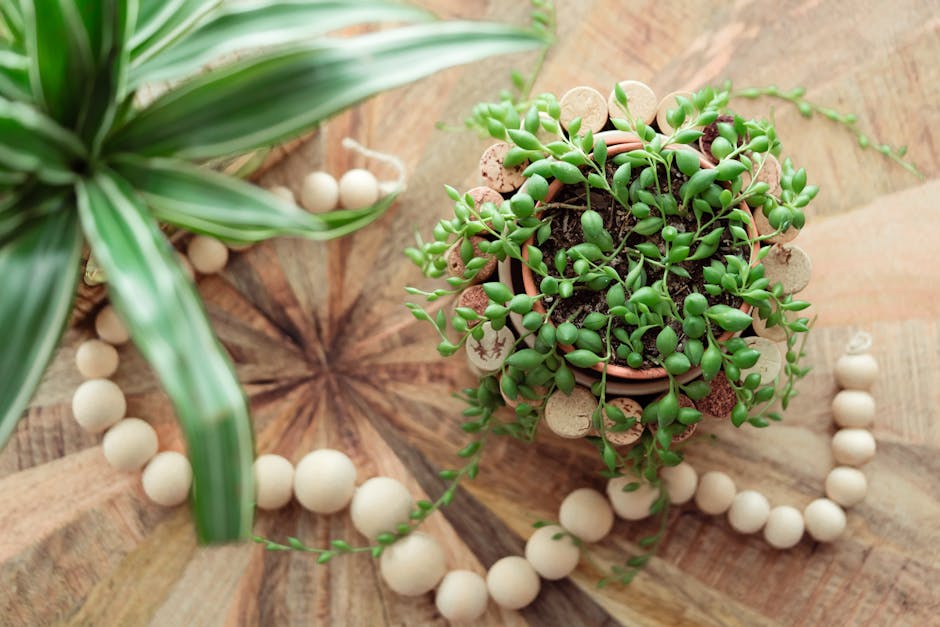Mastering the Art of String of Pearls Propagation: A Comprehensive Guide
The String of Pearls (Senecio rowleyanus) is a beloved succulent known for its charming, pea-sized leaves cascading down its trailing stems. Its unique appearance and relatively easy care make it a popular choice for indoor plant enthusiasts. But what happens when you want to expand your collection or share this beauty with others? That’s where propagation comes in. This comprehensive guide will equip you with the knowledge and skills to successfully propagate your String of Pearls, leading to a thriving and expanding plant family.
Understanding String of Pearls Growth and Propagation
Before diving into the propagation methods, understanding the plant’s natural growth habits is crucial. String of Pearls is a trailing succulent, meaning it grows outward and downward, often reaching considerable lengths. This trailing nature lends itself well to several propagation techniques. The plant’s nodes, located along the stems, contain the potential for new growth and roots, making it remarkably easy to propagate.
Ideal Conditions for Propagation
- Warm temperatures: Aim for temperatures between 65-75°F (18-24°C). Avoid extreme heat or cold.
- Bright, indirect light: String of Pearls thrives in bright, indirect light. Direct sunlight can scorch its delicate leaves.
- Well-draining soil: Use a well-draining succulent and cactus potting mix to prevent root rot. Adding perlite or pumice improves drainage further.
- Proper moisture: Allow the soil to dry out completely between waterings. Overwatering is a common cause of failure in propagation.
Methods for Propagating String of Pearls
Several effective methods can be used to propagate String of Pearls. Each has its own advantages and disadvantages, and choosing the right method depends on your preferences and the resources available.

1. Propagation from Stem Cuttings
This is the most common and arguably the easiest method. Stem cuttings are simply sections of the stem, typically containing several nodes.
- Prepare the cuttings: Carefully snip a section of healthy stem, about 4-6 inches long. Ensure each cutting includes several nodes.
- Allow cuttings to callus: Let the cut ends dry for a few days, allowing a callus to form. This helps prevent rot.
- Planting the cuttings: Plant the cuttings in a well-draining potting mix, burying about an inch of the stem. Ensure the nodes are partially buried in the soil. Gently water the soil and allow it to dry before watering again.
- Provide appropriate conditions: Place the cuttings in a location with bright, indirect light and moderate warmth. You can increase humidity by covering the cuttings with a clear plastic bag or propagator dome. Remove condensation regularly to prevent fungal growth.
- Patience is key: It can take several weeks to see new roots and growth. Avoid overwatering during this period.
2. Layering
Layering involves rooting a section of the stem while it’s still attached to the mother plant. This method can lead to faster results and minimize stress on the cutting.
- Select a stem: Choose a long, healthy stem that reaches near the soil.
- Pin down the stem: Gently bury a portion of the stem under the soil, securing it with a small rock or peg.
- Maintain moisture: Keep the soil slightly moist.
- Observe for roots: After several weeks, the buried section should develop roots. Once this happens, you can carefully separate the new plant from the mother plant.
3. Propagation from Leaf Cuttings (Less Reliable)
While String of Pearls can be propagated from leaf cuttings, this method is less reliable than stem cuttings. The success rate is lower, as leaves often lack the necessary nodes for proper root development. If attempting this method, follow similar steps as stem cuttings, ensuring the leaf base is buried in the soil.

4. Division
If your String of Pearls has grown significantly large and pot-bound, division is an excellent propagation method. This involves separating the plant into smaller sections, each with its own root system.
- Remove the plant: Carefully remove the entire plant from its pot.
- Separate the sections: Gently separate the plant into smaller sections, ensuring each section has a good root system and sufficient stems and leaves.
- Repot the divisions: Plant each section in its own pot with fresh succulent and cactus potting mix.
- Water gently: Water lightly to settle the soil.
Aftercare for Propagated String of Pearls
Once your propagated String of Pearls have established roots and begun to grow, proper aftercare is crucial for their continued health and development.
- Watering: Water thoroughly but infrequently, allowing the soil to dry completely between waterings. Avoid overwatering, which can lead to root rot.
- Light: Maintain bright, indirect light. Avoid direct sunlight, which can scorch the leaves.
- Fertilizing: Fertilize sparingly during the growing season (spring and summer) with a balanced liquid fertilizer diluted to half strength.
- Repotting: Repot your propagated String of Pearls as they grow larger, using fresh succulent and cactus potting mix.
- Pest and disease control: Regularly inspect your plants for pests and diseases. Address any issues promptly.
Troubleshooting Common Problems
Even with careful propagation, you might encounter some challenges. Here are some common problems and their solutions:
- Root rot: Caused by overwatering. Allow the soil to dry completely between waterings and ensure well-draining soil.
- Leaf drop: Can be caused by underwatering, overwatering, or insufficient light. Adjust watering and light conditions accordingly.
- Slow growth: Can indicate insufficient light or nutrients. Increase light exposure and fertilize sparingly.
With a little patience and attention to detail, you can successfully propagate your String of Pearls and enjoy a thriving collection of these delightful succulents. Remember to adapt these techniques to your specific conditions and always observe your plants for any signs of stress.


